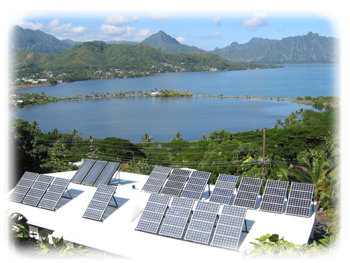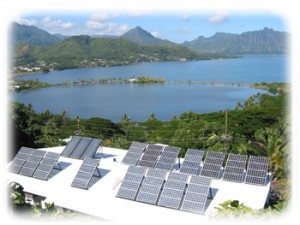Hawaii’s commitment to alternative energy recently reached a milestone. According to Business Week, Hawaiian Electric Co. has reached 20 megawatts of solar photovoltaic energy on the island of Oahu. The utility said the mark was reached in July when they installed Easter Seals’ PV system. Easter Seals, a non-profit health agency, received $5,000 as a gift.
Nearly 4,000 Oahu customers benefit from solar power. They can also benefit from a feed-in tariff scheme whereby they can sell excess electricity back to the grid.
More solar power capacity is being added. This week, Forest City Hawaii and Hawaiian Electric Company announced they have reached a power purchase agreement for up to one megawatt of solar photovoltaic (PV) power to be generated at the Kapolei Sustainable Energy Park in Kapolei, also in Oahu.

Hoku Solar, a subsidiary of Hoku Corporation, will design and install the project using more than 4,200 solar energy panels that will sit on a concrete racking system.
The 12-acre site where the solar farm will be built was until 1986 an industrial disposal site. The U.S. Environmental Protection Agency ordered dumping to be halted and the site sealed under a plastic liner and thick mound of asphalt. That rendered the site unusable as that kind of cap has to be undisturbed.
The James Campbell Company, whose industrial park is near the site, decided to change that and proposed the area to become a solar farm.
PV panels can be installed directly on the surface, allowing “brightfields” to operate on sites not suitable for most other forms of development.
“The Kapolei Sustainable Energy Park is a model for what Hawaii wants to accomplish in meeting its clean energy goals, while making effective use of land,” said Jon Wallenstrom, president of Forest City Hawaii, one of the project partners.
“Considering the past use of this property, it’s a remarkable turnaround. It will now be used to help preserve our environment going into the future.”
The contract is now waiting for approval by the Hawaii Public Utilities Commission with input from Consumer Advocate. If it passes regulatory approval, the hope is that it will be operational by the end of 2011.

 Follow
Follow